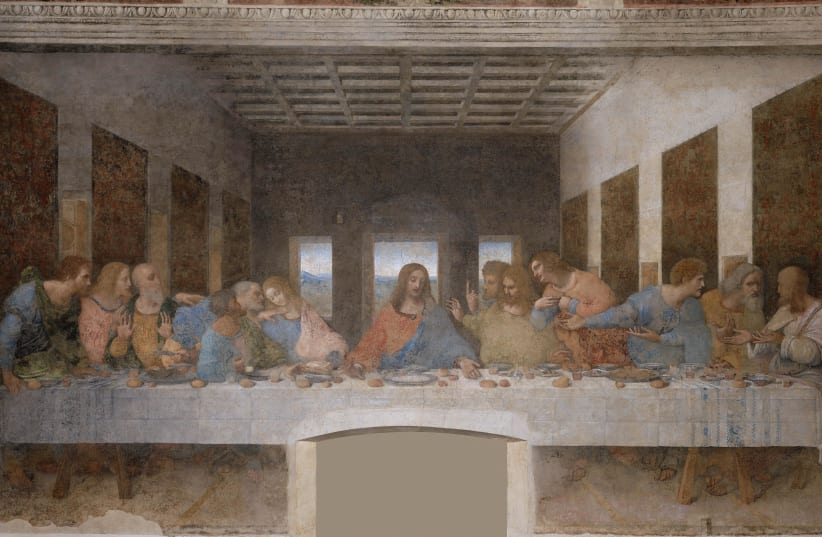The Last Supper is often identified as a Passover Seder.The connection between the two events is observable to this day, as both Passover and Easter, a holiday intimately tied to the Last Supper, often occur at the same time. However, the two holidays are slowly growing further and further apart, which points to a question about how they were ever connected in the first place.The tie between the two holidays dates back to the Last Supper, when Jesus, according to many scholars, had a Passover Seder soon before his crucifixion, although there is a debate on whether it was, in fact, a Seder. This happened on what is now called Maundy Thursday, the day before Good Friday and three days before Easter.
At first, Christians used the Jewish calendar to set the days of their holidays, with Easter falling out on the first Sunday after the 15th of the Hebrew month of Nisan. At the First Council of Nicaea in 325 CE, the Church changed that, deciding to set its own day for Easter.Today, most Christian communities celebrate Easter on the first Sunday after the first full moon after March 21. The timing doesn't always match up with the Jewish calendar, though. In fact, the two holidays occur a month apart about 15% of the time.The main driving factor arises in the difference between lunar and solar calendars, especially considering that the two calendars vary from year to year.The Jewish calendar is mainly based on a lunar system, but corrections are made when necessary to make sure that the dates always remain within the same season. These corrections are mandated by the Bible, which commands that Passover (Deuteronomy 16:1) must occur in the Spring and Succot (Exodus 23:16) must be in the Fall, as explained by the rabbis. This, in a way, melds the lunar and solar calendars together.This correction used to happen with a decision made by the Sanhedrin (Jewish religious "supreme court"), based on eye-witness testimony of the moon's phases. Leap years would be decided based on a few considerations concerning both the seasons and practical considerations including the spring equinox, the ripening of barley and the conditions of roads, according to the Talmud.As the Sanhedrin dissolved due to persecution by the Romans, Hillel II calculated a fixed calendar in a feat of mathematics and astronomy, according to Jewish tradition. The calendar was tweaked and set over the next few hundred years and is in use to this day in the same form, in which leap years with an added month happen in years 3, 6, 8, 11, 14, 17 and 19 of a 19-year cycle.As much as this system keeps it close to solar years, it doesn't work 100%."The Jewish calendar drifts about one day later every 200 years," Benjamin Dreyfus, a professor of physics at George Mason University who runs the Hebrew Calendar Facts Facebook page, told The Atlantic. This means that Passover falls a month later than Easter three times in every 19-year cycle, with the gap growing slowly over time.The Gregorian calendar, used by most of the world, also doesn't match up exactly with a solar year. Because of this, there are leap days about 24 times a century, according to The Atlantic. This brings the calendar almost in sync. The International Earth Rotation and Reference Systems Service therefore, in a surprisingly Talmudic fashion, announces every year whether to add a leap year to bring Earth time completely in sync with solar time, although this practice is not universally accepted.Most Roman Catholics and Protestants now celebrate Easter after March 21 on the Gregorian calendar, while the Eastern Orthodox Church uses the Julian calendar to determine the dates of holidays (Orthodox Easter is April 28 this year).This year and last year, the first night of Passover fell on Good Friday (a day after Jesus would have done his Seder if it happened on Maundy Thursday). This won't happen twice in a row again until 2113 and 2114, according to Dreyfus.This occurrence is connected to another rule in the Jewish calendar, which raises an issue with the timing of the Last Supper. The first day of Passover can never fall on a Monday, Wednesday or Friday due to a rule in the Hebrew calendar, according to Maimonides. The law dictates that Rosh Hashanah can never be on a Saturday night, which would occur if Passover was on a Thursday. (The amount of days between Passover and Rosh Hashanah never changes, at least according to the fixed calendar.)This means that the Seder night could never occur on a Thursday night, unless Jesus was in a place where two nights of Passover were observed, which was done in areas outside of riding distance from the Sanhedrin, according to the Talmud. If the Last Supper took place in Jerusalem (meaning extremely close to the Sanhedrin), then there was no second night.There may be an explanation within historical context. Perhaps the Last Supper fell on a different day before the Church switched from the Jewish calendar. But for now, the question remains: why exactly is Maundy Thursday night different than all other nights?Why is the Last Supper on a different night than all other Seder nights?
The tie between Passover and Easter dates back to the Last Supper, when Jesus had a Passover Seder soon before his crucifixion. This happened on what is now Maundy Thursday, three days before Easter.
